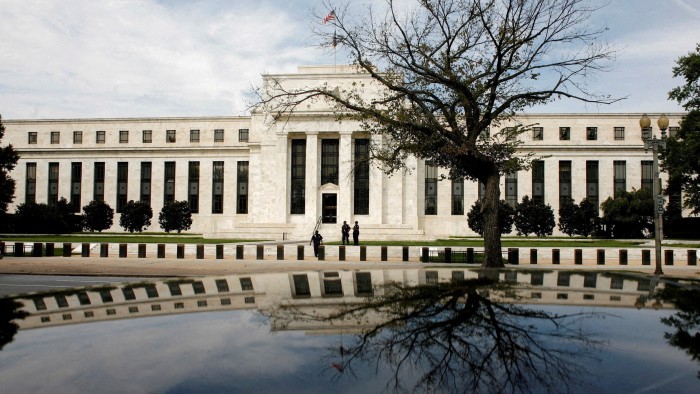Unlock the White House Watch newsletter for free
Your guide to what the 2024 US election means for Washington and the world
The writer is founder and chief investment officer at ABP Invest
Even after the all commotion around Donald Trump’s return to the White House, there is still a widespread mismatch between the boost to growth widely expected under the president and US interest rate expectations.
The latest meeting of the Federal Reserve in December spooked markets with a “hawkish” outlook on the prospect for further rate cuts. Markets adjusted, pricing in two cuts rather than four for 2025. On timing, markets are now pricing in a 25 per cent probability of a cut in March, rising to more than 60 per cent by June, and near 84 per cent by December. Overall, the market is pricing in some 0.40 percentage points of cuts by the Fed. We disagree.
We don’t believe the Fed will cut rates in 2025 — we don’t even believe that the Fed is done. Instead, we expect the resilient US economy and Trump’s polices to push inflationary expectations higher and force Fed chair Jay Powell to increase rates from September onwards.
Our rationale is based on three key factors. First, the US economy. Leading economic indicators and data on consumer sentiment, corporate profits and services activity suggest business has been in clear expansion mode since August.
On employment, there is a resilient picture across all economic sectors. Historically, with the exception of 1973, there were three sectors which pre-empted a recession: manufacturing, residential construction and temporary help services. With the exception of the latter, the other two are quite resilient, precluding a weaker US economy driven by rising unemployment.
As for the “info’” sector — which covers areas like publishing and telecoms more relevant in today’s society as opposed to the 1980s and 1990s — the level of new jobs has remained stable at 3-4 per cent below its recent cyclical peak and better than October 2023. In summary, employment remains resilient with no red flags of an impending economic weakness leading to a recession. And US inflation will remain this year within the 2.5- 3.5 per cent range — either on its own accord or helped by the Fed.
Now let’s look at our second factor: Trump’s policies. Combined with the resilient economy, we expect these to lead to higher rates. The “known unknowns” are which policies Trump is going to enact, how aggressively will he pursue them, and last but not least, when will he enact them (if he does!). The inauguration provided some colour but no clarity. However, the common denominator is that all policies under consideration are potentially inflationary: fiscally expansionary tax cuts, tariffs, growth-boosting deregulation and the deportations of undocumented migrant workers.
This brings us to the third reason: Fed credibility. If the combination of the US economy plus Trump’s policies does not push inflationary pressures higher — either because the economy surprises to the downside, or Treasury secretary nominee Scott Bessent encourages Trump to adopt more orthodox policies — then we don’t see the Fed having to raise rates.
If, however, the US economy on its own, or in combination with Trump’s policies, do raise inflationary pressures and more importantly, expectations of rising prices, then the Fed will take immediate action — first with a more hawkish rhetoric (both to markets and policymakers behind the scenes), followed by tighter policy.
More specifically, we would expect the Fed to observe and listen in the first quarter this year, warn about possible tightening in the second and take action in third.
In the 2020-21 period, the Fed was too late to tackle a surge in inflation, leading to Powell’s infamous policy pivot in December 2021. This time, he can’t risk being wrong twice. Therefore, the Fed will remain super orthodox and choose inflation over employment should the decision have to be taken. Furthermore, and probably more controversially, we believe the next Fed chair to take over from Powell in May 2026 will also remain orthodox, despite being Trump’s political appointee.
The latter appointment, however, will set the scene for the eventual shift in the Fed’s inflation target from 2 per cent to 3 per cent during the central bank’s third “Framework Review” in 2030. The impact of geopolitical tensions and the need to address socio-economic imbalances will necessitate a marginally higher level of inflation to ensure full employment. This would also set the path for other central banks to follow suit.
Read the full article here

